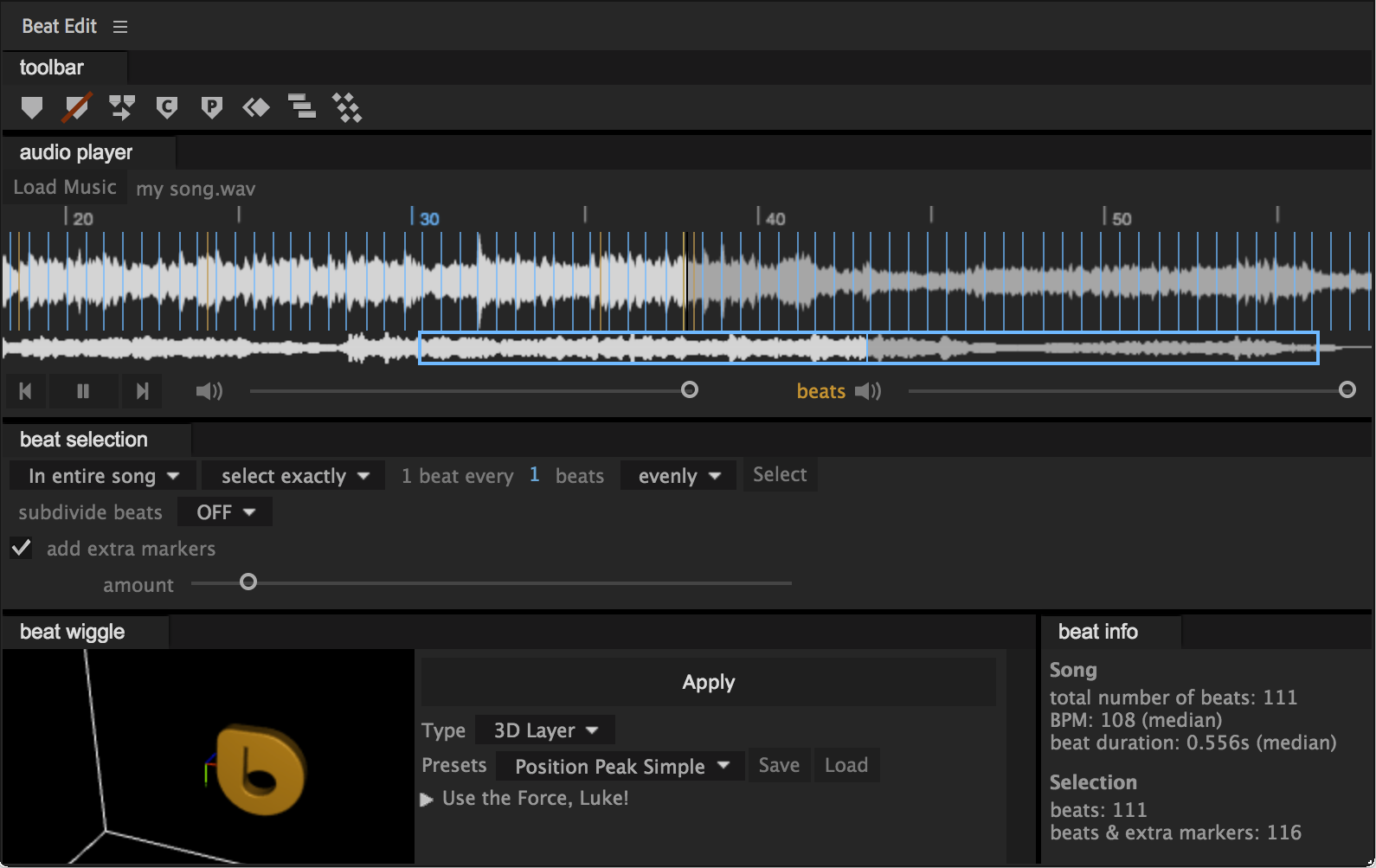Cover image via
This free effect allows you to apply a smoothly. A&E App on iPhone, iPad & Android. Download the A&E App for your iOS or Android device. Watch your favorite A&E shows on your iPad, iPhone or Android device with the A&E app. Get free access to full episodes and clips, all available whenever and wherever you want. New video is added every day so you'll always have something to watch! Hey everyone, i really hope you enjoyed this video, i've dedicated so much time to editing cause it really is something i enjoy doing. I hope you liked my pr. Create cinematic movie titles, intros, and transitions. Remove an object from a clip. Start a fire or make it rain. Animate a logo or character. Even navigate and design in a 3D space. With After Effects, the industry-standard motion graphics and visual effects software, you can take any idea and make it move.
After Effects and Premiere Pro are two of Adobe’s flagship post-production apps. But which one do you need for which task? Let’s find out.
When you’re creating a new project, knowing when to use Premiere and when to use After Effects can make or break your project. They are both extremely powerful programs, that can sometimes perform the same functions, but most of the time, one of them is better at something than the other.
Now the differences between these two programs are pretty apparent to anyone who has used them before. But, if you’re new to the suite, it can be confusing determining which one you need to learn for a given post-production task.
Let’s take a look at Adobe’s two main video production software tools and see what they do — and when to use one over the other.

Adobe Premiere Pro
Adobe Premiere Pro is an NLE (nonlinear editor) with the main function of editing video clips together in a sequence. This is the program that most beginners open to create a simple video with multiple clips and music. It’s incredibly scalable — easy to use for beginners, and still powerful enough for a master editor. It’s got just about everything you need to complete a professional video: a clip editor, color correction tools, audio programs, and even graphics software.
Tasks for Premiere:
- Editing a video with existing clips imported from a camera.
- Editing audio within your video — Premiere’s audio functions far surpass AE’s.
- Placing transitions between clips within your timeline.
- Creating/polishing any type of video — short films, music videos, social videos, etc.
Adobe After Effects
Adobe After Effects is a digital motion graphics platform used to create either simple animations or intricate graphics sequences. If you ever hear of a “motion graphics expert,” chances are they’re proficient in After Effects. The program adds motion to layers and assets that you couldn’t do in Premiere. Its motion tools are much better than Premiere’s, and it’s the preferred tool for adding motion to videos, images, and designs. It’s a “hard to learn, easy to master” type of program, but once you get the hang of it, it’s essential for creating motion graphics or visual effects for your projects.
Tasks for After Effects:
- Creating motion graphics packages for your projects.
- Adding motion blur and movement to assets and layers.
- Manipulating multilayer sequences that require detailed keyframing.
- Creating title sequences that include keyframe-based animations.
After Effects Vs. Premiere Pro: What’s the Difference?
To sum it all up, Premiere assembles all of your assets and creates a final video product, while After Effects is mainly an asset-generation tool. People complete projects in After Effects all the time, though — it’s great for creating motion-based social video with only a song bed underneath, or even creating a full animation.
So really, there’s no true “vs.” in this argument. It’s kind of like debating PowerPoint and Word — you use them for different tasks, even though they share some similar functions. They are extremely well linked, though — and like many editors, I use them concurrently all of the time. Once you get familiar with both programs, you’ll learn how to dynamically link After Effects compositions to your Premiere projects so you can access both assets at the same time. (For more information about dynamic linking, check out the video by Justin Odisho above.)
Looking for more on Premiere and After Effects? Check these out.
Cover image via
Missing some After Effects skills? Here are some tutorials that teach all the basic knowledge you’ll need for working with the program.
When first getting started in the world of video editing, NLE editors like Adobe Premiere Pro and Final Cut Pro can seem like the be-all-end-all of video editing knowledge. However, as you continue to grow — and do your research into how to master the programs — you quickly learn that video editing using After Effects skills can actually be pretty straightforward and fun.

Then, once you think you have everything figured out, you’re introduced to the powerful behemoth of digital video effects, motion graphics, and compositing that is Adobe After Effects. And while some of your basic editing knowledge might serve you in some ways, learning After Effects skills really is a completely different beast. And to master it as well, you’ll need to change your thinking and focus.
Ae Editing App Apk
So, for those looking to take these first steps into really understanding how After Effects works — and for those who are ready to truly unlock the power of Adobe’s flagship motion effects platform — here are seven in-depth tutorials to teach you the basics and hone your skills.
1. Animating with Trim Paths

Looking for a fun and simple tutorial to dive into while working with After Effects? Well, try out this one on how to animate with trim paths! The desired effect can be really quite cool and a very impressive animation to add to any project. Plus, many users just developing their After Effects skills users might not be aware that this technique exists.
Here’s a complete step-by-step breakdown on how to unlock this hidden feature for making precise adjustments to your shape layer paths. You can use this effect for any of the following:
- Infographics
- Map Routes
- Text Boxes
- Text Strokes
- Circle Bursts
Ae Free
2. Easy Motion Tracking
In this tutorial by Michael Tierney, we go over some of the very basic and easy ways to work with motion tracking in After Effects. Download conexant printers driver. Pay attention because a lot of these same principles will stay relevant and helpful in application as you learn more advanced techniques later on.
In the meantime, even this simple technique is a great way to round out your After Effects skills, and it can really up the value of your projects and is great to add to client videos.
3. Quick Tips for Compositing Using After Effects Skills
When first starting out in After Effects, some of these early techniques can be great tools in adding that extra level of dynamics to your regular Premiere Pro projects. One way to really showcase some added value is by creating your own titles with even the most basic of compositing techniques.
Follow along with the tutorial above, and be sure to download the free project file here.
4. Export Transparent Background Videos
In this tutorial by Justin Odisho, we get a course in how to create and export transparent background videos in After Effects. This is especially helpful when combined with techniques from the tutorial above, and can be great for creating and using your own custom lower thirds.
5. A Beginner’s Guide to Rotoscoping
While “rotoscoping” as a term itself might scare some potential editors away, it’s actually not that scary and a surprisingly intuitive technique to master. In this accessible and simple beginner’s guide video tutorial, you can learn some of the basic techniques of working with masking and Roto Brush tools for some simple rotoscoping tricks.
Read up on the full step-by-step article here. Download marvell printers driver.


6. Learn to “Float Yourself”
For many video editors and aspiring visual effects artists, the allure of learning After Effects skills comes from a desire to create some of those mind-bending, jaw-dropping visuals you often see online and on social media.
If you’re looking to try out something a little more advanced and outstanding, this tutorial by Peter McKinnon can show how to create the viral “float yourself” effect. And it’s not as tricky as you might think.
7. Create 8-Bit Pixel Art
This is definitely one of the cooler After Effects skills tutorials we’ve produced here at PremiumBeat, but here are some straightforward, effective, awesome guides to creating 8-bit pixel art for your videos or projects. This tutorial goes over the following eight tools:
Ae Editing Free
- Posterize
- CC Block Load
- Tint
- Grid
- Posterize Time
- Video Footage
- Alpha Channel Footage
- Installing the After Effects 8-Bit Game Preset
You can follow along with this full write-up here.
Cover image via “Tutorial: Getting Started with Content-Aware Fill in After Effects.”
Ae Editing App Download For Pc
If you’re still hungry for more After Effects learning, tutorials, and tricks, check out these articles.
